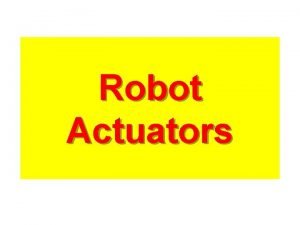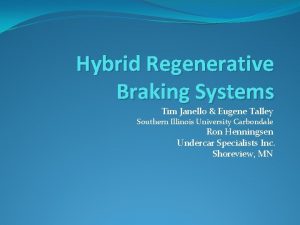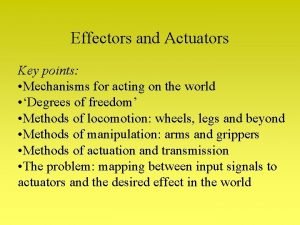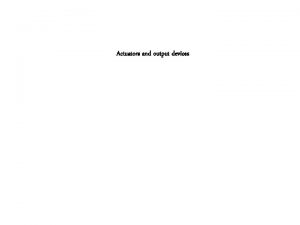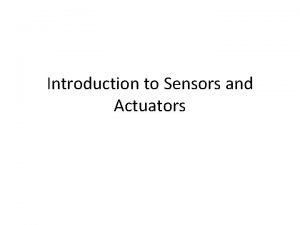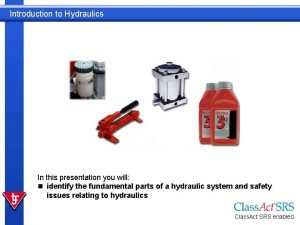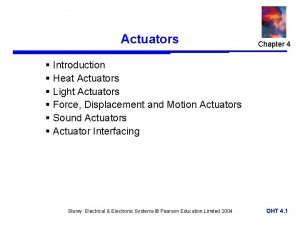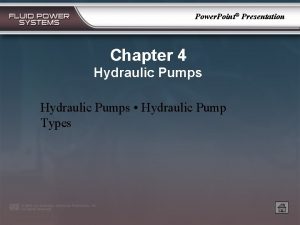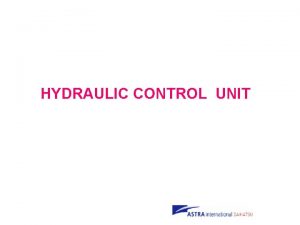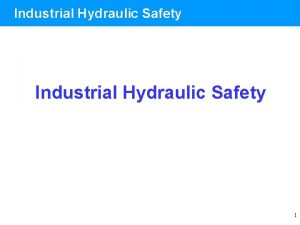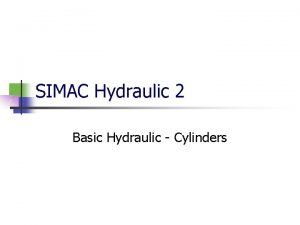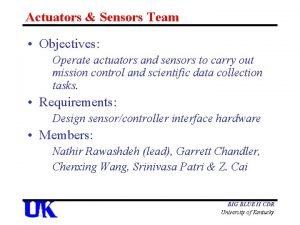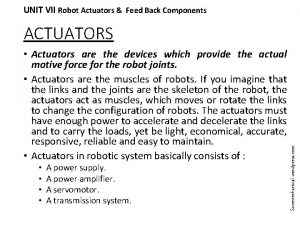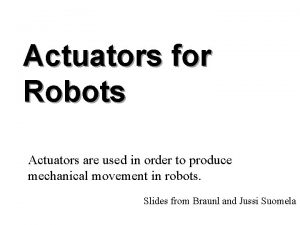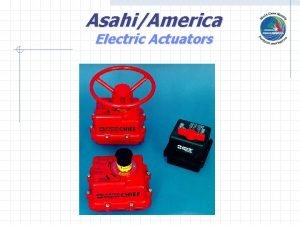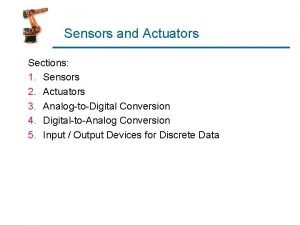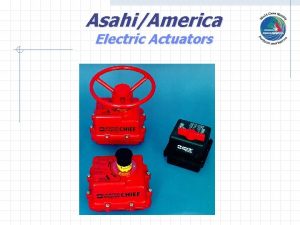Power Point Presentation Chapter 7 Hydraulic Actuators Hydraulic



























- Slides: 27

Power. Point® Presentation Chapter 7 Hydraulic Actuators Hydraulic Cylinders • Hydraulic Motors

Chapter 7 — Hydraulic Actuators Hydraulic cylinders are categorized as ram, single-acting, and double-acting.

Chapter 7 — Hydraulic Actuators A ram cylinder has the simplest design of all hydraulic cylinders because it has only one chamber and provides force in only one direction.

Chapter 7 — Hydraulic Actuators Most single-acting cylinders have a rod-end vent that allows air to enter and vent from the rod end of the cylinder.

Chapter 7 — Hydraulic Actuators A single-acting, springreturn cylinder uses fluid flow for extension and a spring for retraction.

Chapter 7 — Hydraulic Actuators A telescoping ram cylinder is a hydraulic cylinder that extends its rod in stages.

Chapter 7 — Hydraulic Actuators Double-acting cylinders are able to produce force in both directions by applying hydraulic fluid pressure to either side of the piston.

Chapter 7 — Hydraulic Actuators A double-rod cylinder can provide equal force and piston speed in both directions.

Chapter 7 — Hydraulic Actuators Tandem cylinders consist of two or more in-line cylinder barrels with their rods connected to form a common rod.

Chapter 7 — Hydraulic Actuators Duplex cylinders have the same assembly as tandem cylinders, but the rods are not connected.

Chapter 7 — Hydraulic Actuators A cushion is a tapered plug attached to the piston and rod and includes a needle valve with a check valve in the end cap at the rod end, cap end, or both.

Chapter 7 — Hydraulic Actuators Stop tubes prevent cylinder rods from sagging and pistons from pivoting.

Chapter 7 — Hydraulic Actuators A seal creates positive contact between the components of a hydraulic cylinder to help contain pressure and prevent leaks.

Chapter 7 — Hydraulic Actuators A back-up ring is installed on the side of the O‑ring receiving the least amount of pressure or on both sides if the O-ring receives pressure from both directions.

Chapter 7 — Hydraulic Actuators When pressure is applied to a Quad-ring®, it creates a dynamic seal by pressing against one side of the groove.

Chapter 7 — Hydraulic Actuators Common cup seals include V‑ring seals and U‑ring seals.

Chapter 7 — Hydraulic Actuators Compression seals are static cylinder seals commonly referred to as gaskets or packing.

Chapter 7 — Hydraulic Actuators A rod wiper prevents foreign materials on the rod from contaminating the hydraulic fluid inside a cylinder.

Chapter 7 — Hydraulic Actuators Cylinder mounting methods are categorized as fixed or pivot.

Chapter 7 — Hydraulic Actuators A hydraulic motor converts hydraulic energy into rotating mechanical energy.

Chapter 7 — Hydraulic Actuators The farther a load is from the center of a hydraulic motor shaft, the greater the torque required to move the load.

Chapter 7 — Hydraulic Actuators Changing displacement can allow for greater breakaway or starting torque, but it has an adverse effect on hydraulic system speed and operating pressure.

Chapter 7 — Hydraulic Actuators A gear motor has meshing gears, which are rotated by hydraulic fluid flow.

Chapter 7 — Hydraulic Actuators When hydraulic fluid enters the inlet of a vane motor, the resulting force causes rotation of the rotor and torque on the drive shaft.

Chapter 7 — Hydraulic Actuators A piston motor has internal pistons, which are extended by hydraulic fluid pressure to produce rotational movement.

Chapter 7 — Hydraulic Actuators Oscillators are used to provide instant torque at a high rate for moving an object a short distance, depending on the setting of the stop.

Chapter 7 — Hydraulic Actuators Rack and pinion valve actuators can be low-torque or high-torque designs.
 Advantages of hydraulic actuators
Advantages of hydraulic actuators Peas examples
Peas examples C1341 prius
C1341 prius Effectors and actuators
Effectors and actuators Actuators output devices
Actuators output devices Introduction to mechatronics ppt
Introduction to mechatronics ppt Sensors and actuators introduction
Sensors and actuators introduction Sensors and actuators
Sensors and actuators Power point presentation topic in hindi
Power point presentation topic in hindi Power point presentation design west vancouver
Power point presentation design west vancouver Active power reactive power apparent power
Active power reactive power apparent power Powerbi in powerpoint
Powerbi in powerpoint Point point power
Point point power Hydraulic presentation
Hydraulic presentation Diameters of fetal head
Diameters of fetal head Leopold maneuver
Leopold maneuver Hand and power tool safety ppt
Hand and power tool safety ppt Point of view presentation
Point of view presentation The starting point in a presentation
The starting point in a presentation Solar power satellites and microwave power transmission
Solar power satellites and microwave power transmission Potential power
Potential power Flex28024a
Flex28024a Dispersive power of grating increase with
Dispersive power of grating increase with Power of a power property
Power of a power property Chain rule範例
Chain rule範例 Power angle curve in power system stability
Power angle curve in power system stability Power absorbed or supplied
Power absorbed or supplied Evangelio del domingo en power point
Evangelio del domingo en power point
